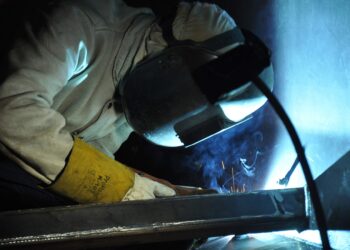What was meant to be a showcase of Slovakia’s investment in public safety has turned into a public embarrassment. A brand-new €574,000 fire engine, proudly presented as a “Christmas gift” by Interior Minister Matúš Šutaj Eštok in December 2024, was pulled from service almost immediately after its ceremonial unveiling — and sent back to the factory.
According to several Bratislava firefighters who spoke to the Slovak daily Denník N on condition of anonymity, the Scania-based engine suffered from more than 30 defects when it finally arrived at their station two months later.
Among the issues reported were overheating brakes, water leakage, poorly mounted equipment, and flimsy plastic fixtures where stainless steel or aluminium would normally be expected. “We’ve never had a brand-new engine with this many problems,” one firefighter said, adding that crews were relieved they did not have to rely on it during the Christmas period.
A Flagship Vehicle, a Troubled Tender
The truck was the first vehicle delivered under a €46 million state contract to supply 80 fire engines. The deal was awarded in June 2024 to LRK Trading, a small and relatively unknown Slovak company, prompting opposition parties to call the procurement overpriced.
While the Ministry of Interior insists that the supplier met all legal requirements and offered the lowest bid, firefighters argue that the vehicle’s design was “illogical” and potentially dangerous. Heavy hose baskets were mounted high above the fixed high-pressure reel, while breathing apparatus was placed awkwardly high in the cab — wasting precious seconds in an emergency.
Brake performance raised the most serious safety concerns. Crews reported a strong burning smell after early runs, steering-wheel vibration under light braking, and dangerously low efficiency in both service and parking brakes during a test.
Political Fallout and Denials
Interior Minister Šutaj Eštok initially dismissed criticism as politically motivated, refusing to answer detailed questions from journalists. Prime Minister Robert Fico has also avoided addressing the controversy directly.
Meanwhile, the Fire and Rescue Corps has quietly introduced modifications in subsequent deliveries — including replacing plastic partitions with metal ones, rearranging equipment storage, and adding an auxiliary engine brake. Officials insist these are “accommodations,” not admissions of fault.
Scania Slovakia, which supplies the chassis, has confirmed abnormal brake wear on the first truck but says the issue has been resolved and all vehicles meet EU standards.
Questions Over Cost and Procurement
Former Interior Minister Roman Mikulec has claimed that comparable Czech fire engines cost nearly half the Slovak price. The financial breakdown of the €46 million framework contract also leaves roughly €12 million unexplained, based on the documents disclosed so far.
Despite growing criticism, regulators and police have so far found no breach of procurement law. LRK Trading’s owner maintains that the vehicle was delivered in full compliance with the tender requirements.
Crews Want Reliability, Not Politics
For frontline firefighters, the debate is about safety, not party politics. “A new €570,000 vehicle should be a top-class, thoroughly thought-through machine — and they buy us this?” one Bratislava crew member said.
With 39 more trucks scheduled for delivery by the end of 2025, all eyes are now on whether Slovakia’s fire service will receive equipment worthy of its price tag — or whether more red-carpet fiascos lie ahead.






